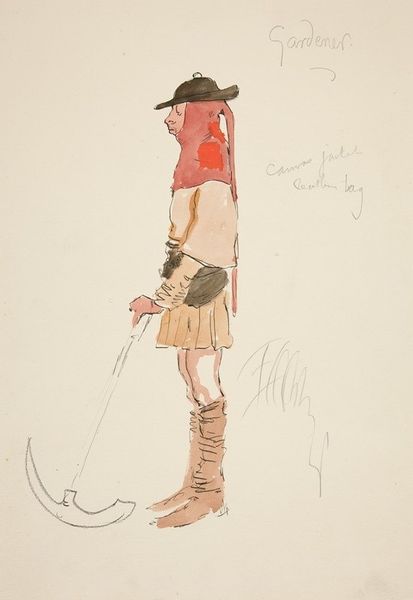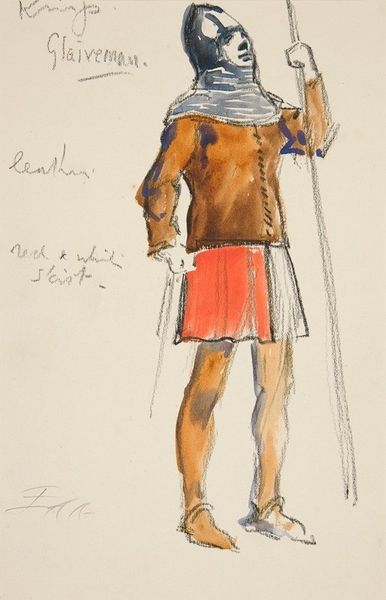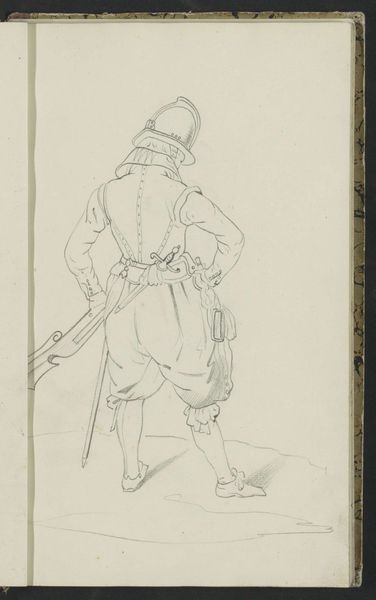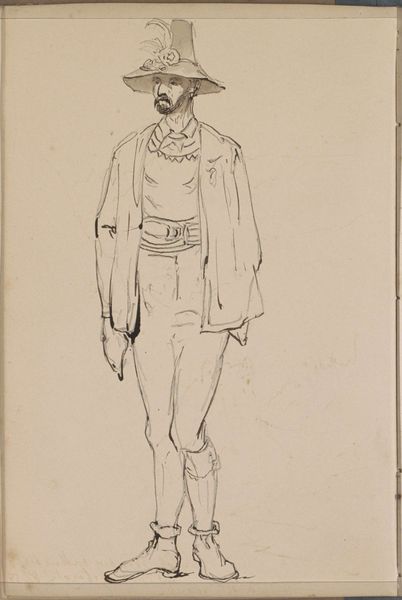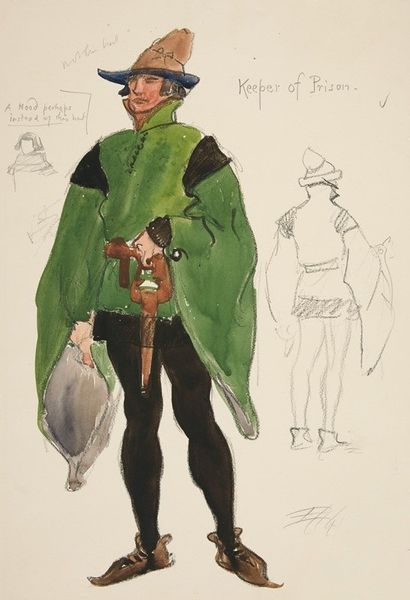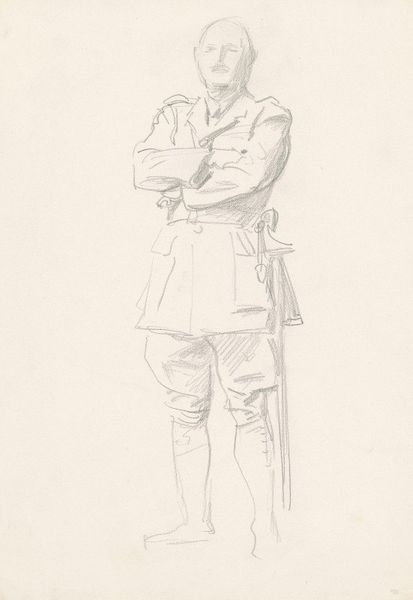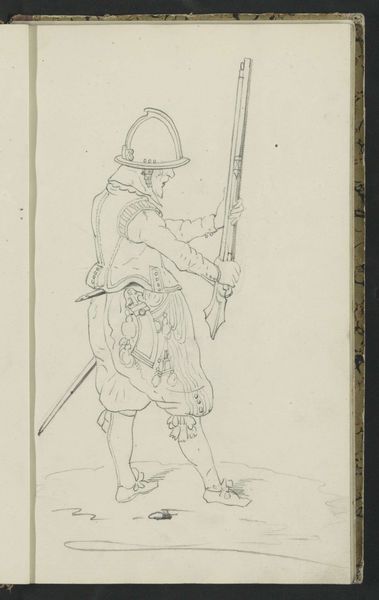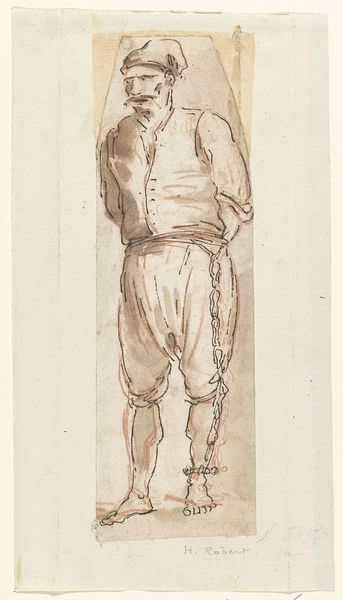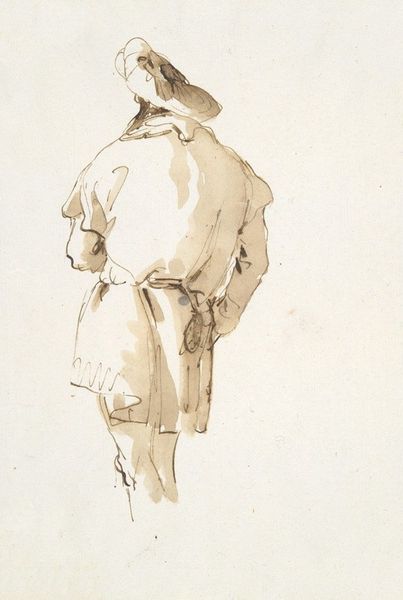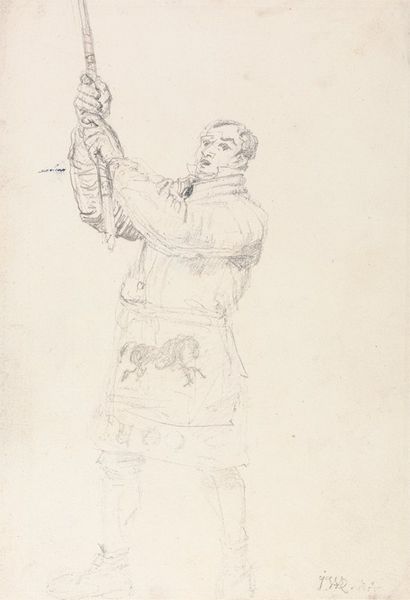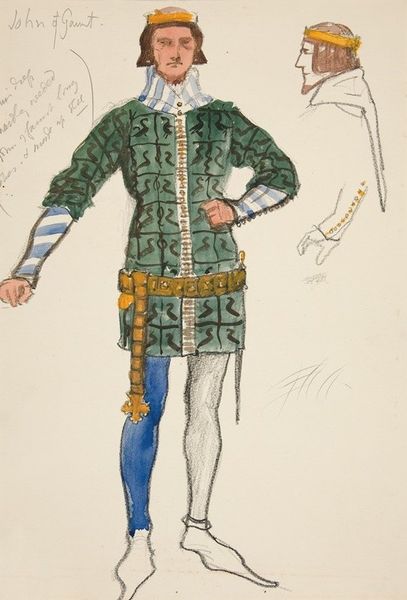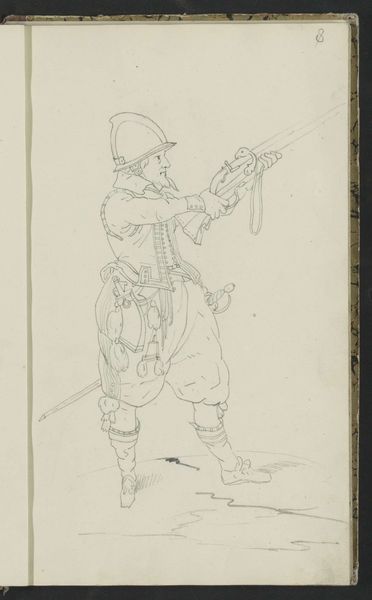
Man of Arms, costume sketch for Henry Irving’s Planned Production of King Richard II
0:00
0:00
drawing, mixed-media, watercolor
#
portrait
#
drawing
#
mixed-media
#
pencil sketch
#
charcoal drawing
#
watercolor
#
pencil drawing
#
portrait drawing
#
history-painting
#
watercolor
Copyright: Public Domain: Artvee
Editor: Here we have Edwin Austin Abbey's mixed-media drawing, "Man of Arms, costume sketch for Henry Irving’s Planned Production of King Richard II." It's a quick rendering, almost like a study, and I'm curious about its purpose beyond just capturing the costume details. What can you tell me about this sketch in its historical context? Curator: It’s intriguing, isn't it? We see here how theatrical productions were deeply embedded in the socio-political landscape. Irving's Shakespeare productions weren't just entertainment; they were major cultural events, often reflecting Victorian values and interpretations of history. The sketch itself becomes a document of that process, revealing the meticulous planning and the symbolic weight attached to even costume details. How do you think this sketch functions as a piece of visual rhetoric? Editor: Rhetoric? It's meant to inform, I suppose, to communicate the design... but I'm not sure about rhetoric. Curator: Consider this: Theatre costumes weren’t just clothing; they signaled status, allegiance, and moral character to the audience. Abbey's detailed rendering would guide the costume designers in crafting an image of Richard II that resonated with the viewers’ expectations, shaping their understanding of the play's narrative and characters. In that light, how might it contribute to the wider construction of historical narratives and national identity during the Victorian era? Editor: I never thought about a costume sketch holding that much potential meaning, beyond just practical design. It sounds like it's really participating in shaping ideas about history! Curator: Precisely! It highlights the critical role of art – even seemingly minor pieces like this – in the larger project of cultural production and historical interpretation. These designs show that visual imagery is not a passive reflection of reality but rather an active participant in its construction. What a powerful insight that gives us. Editor: Thanks, that connection makes perfect sense. I'll certainly look at theatrical costume designs in museums with new eyes now.
Comments
No comments
Be the first to comment and join the conversation on the ultimate creative platform.
